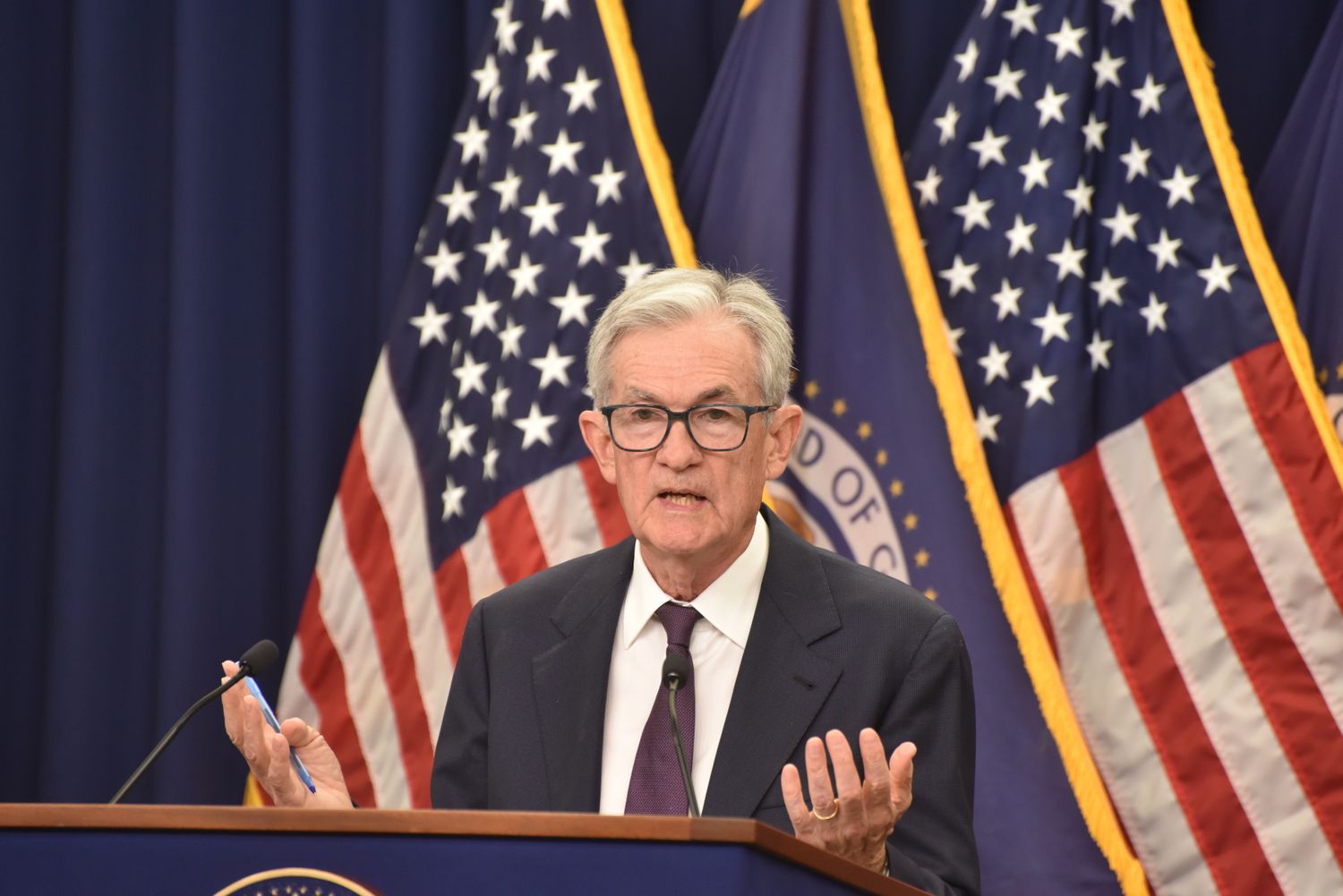The Fed is widely expected to cut the fed funds rate by a quarter of a percentage point to a range of 3.75% to 4%.
Fed officials are cutting rates because they’re concerned about signs of weakness in the labor market, and want to lower borrowing costs to encourage hiring.
The Federal Reserve’s policy committee meets next on Oct. 28 and 29, and policymakers are widely expected to cut the central bank’s key interest rate to lower borrowing costs and prevent the shaky job market from collapsing.
What To Expect From The October Meeting
Investors expect the Federal Open Market Committee to reduce the fed funds rate by a quarter of a percentage point to a range of 3.75% to 4%, according to the CME Group’s FedWatch tool, which forecasts rate changes based on fed funds futures trading data. That would mark the lowest level for the fed funds rate since December 2022. The Fed cut the key rate in September for the first time since December.
Fed officials have said they’re cutting interest rates to boost the economy and prevent a surge of unemployment. Job growth nearly came to a halt this summer as tariffs have pushed up prices and squeezed consumer budgets.
If the fed lowers its key rate as expected, interest costs on many kinds of short-term debt would fall. That includes credit cards and car loans and anything tied to bank prime rates, which are often set at a certain percentage above the fed funds rate. On the flip side, returns on CDs and high-yield savings account would also go down.
What Are The Fed’s Major Considerations?
The Fed is tasked by Congress with a “dual mandate” to keep inflation low and employment high using the fed funds rate, which is the interest rate banks charge to borrow money from one another. The fed funds rate affects borrowing costs on short-term loans like credit cards and car loans, and indirectly influences longer-term loans like 30-year mortgages.
When inflation is high, the Fed raises the rate to discourage borrowing and cool down the economy, allowing supply and demand to rebalance. When the job market weakens, the Fed cuts interest rates to encourage business and give a boost to hiring.
Currently, the economy is facing a rare situation where inflation and the job market are worsening at the same time, posing a dilemma for the Fed as to which problem to tackle first. Officials have been split on what approach to take. Some have advocated for further rate cuts in the coming months, while others view inflation as a greater threat and would like to keep rates higher for longer.
How is employment? Recent reports indicate the job market is slowing down. The country actually lost jobs in June, the first month of losses in more than four years, and added a mere 22,000 in August. Meanwhile, more people are filing for unemployment insurance, and more people are staying on unemployment for longer.
The next official payrolls report from the Bureau of Labor Statistics, due Oct. 3, will shed more light on the matter.
How is inflation? The Fed’s preferred measure of inflation, “core” Personal Consumption Expenditures (excluding food and energy), rose 2.9% over 12 months in August, according to the Bureau of Economic Analysis. That figure matched the expectations of forecasters, leaving the Fed on course for a rate cut.
The Fed is scheduled to see one more major inflation report, on the Consumer Price Index for September, on Oct. 15 just before the meeting.
Inflation has accelerated in recent months, getting farther away from the Fed’s goal of a 2% annual rate. Most Fed officials, with the notable exception of Trump appointee Stephen Miran, have said Trump’s tariffs are pushing up consumer prices and are responsible for most of the inflation increase.
What else is happening? The government is at risk of a partial shutdown starting Oct. 1, which could delay the release of data by federal agencies, including the Oct. 3 jobs report. Democratic senators are threatening a shutdown to win concessions on healthcare policy from the Republican majority. If the standoff continues, a shutdown could leave the Fed flying blind on the labor market.
Will The Supreme Court Help Trump Take Over The Fed?
A major question hanging over the October meeting is whether Fed governor Lisa Cook will be on the 12-person voting committee. President Donald Trump has attempted to oust Cook, citing unproven allegations of mortgage fraud. and install his own nominee in her place as he pressures the Fed to dramatically lower interest rates.
Cook had been appointed to a 14-year term as a Fed leader by former president Joe Biden. A federal court blocked the firing, allowing Cook to retain her role at the Fed, and Trump then asked the Supreme Court to intervene and allow her removal.
Cook’s removal could be a major milestone in Trump’s efforts to remake the Fed, which is an independent agency outside direct control of the White House.
How Does the Federal Reserve Work?
The Federal Open Market Committee (FOMC) is the body that sets the fed funds rate for the Federal Reserve System, the United States’ central bank. It holds eight regularly scheduled meetings each year, which are not open to the public. The Fed’s use of interest rates to influence the economy is called monetary policy.
The FOMC consists of 12 voting members: the seven board governors, the Federal Reserve Bank of New York president, and four other regional bank presidents who serve rotating one-year terms.
At each FOMC meeting, the committee members discuss economic and financial conditions and decide whether and how much to change the fed funds rate. The FOMC issues a public statement about its decision at 2 p.m. on Wednesday when the meeting concludes. The Fed chair, currently, Jerome Powell, typically hosts a press conference afterwards to explain the decision.
